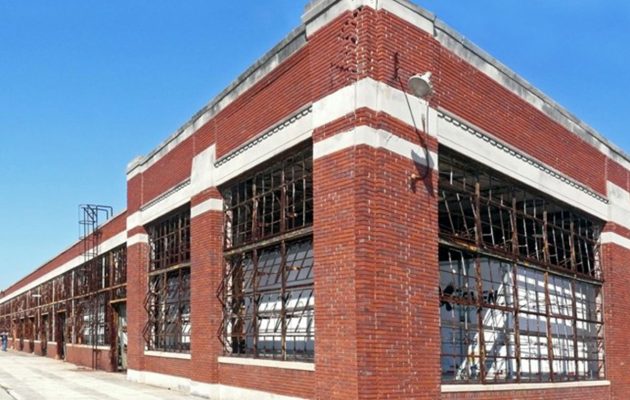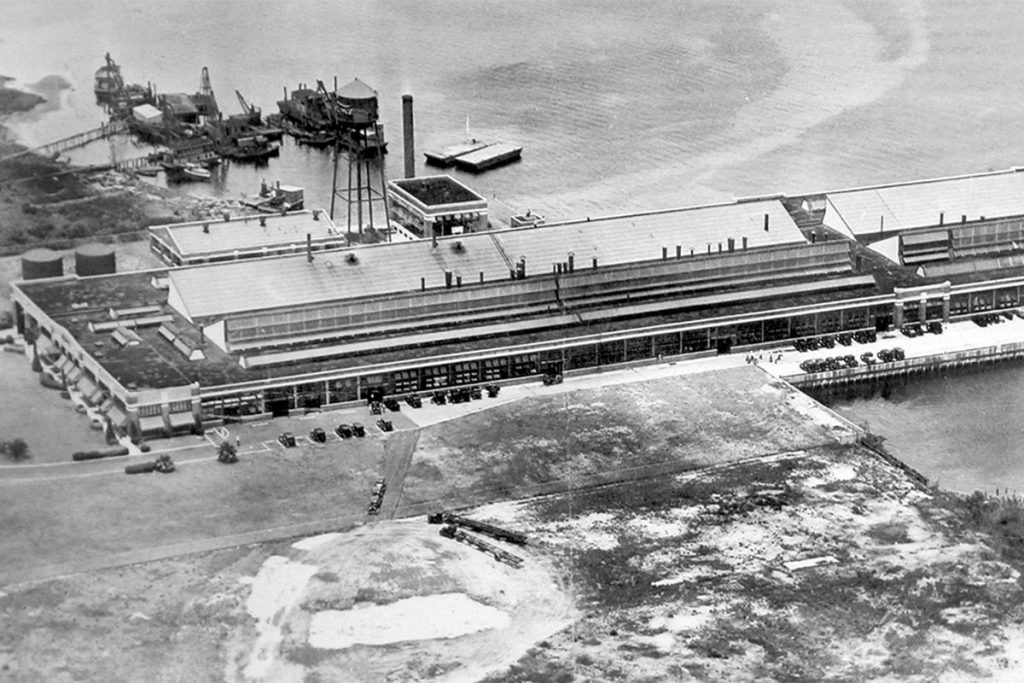Demolition ahead for old Ford Motor Company plant
Posted on November 5, 2022 By Editor Top Stories

The days of the old Ford Motor Co. factory are numbered and demolition is in its future.
Located at 1900 Wambolt Street, the building sits near the Mathews Bridge along the St. Johns River.
The factory was designed by renowned industrial architect Albert Kahn. According to the Jacksonville Historical Society (JHS), it is one of more than 1,000 buildings Kahn designed for Henry Ford. It first opened in 1924 and at its peak, produced more than 200 cars a day from its assembly lines. Ford Motor Company occupied the building until the 1960s.
Over the years, ownership of the building has changed hands. In 2003, it was purchased by Hill Street LLC, which applied for and received landmark status on the building. More than a decade later, the property changed hands again. In 2015, Amkin Hill Street LLC purchased the property, along with several other parcels, for $4.4 million, according to county records.
At an Oct. 4 meeting of the Land Use and Zoning (LUZ) Committee, Assistant General Counsel Carla Lopera with Jacksonville’s Office of General Counsel provided a timeline of events culminating in that day’s hearing. In April of this year, the new owner applied for a certificate of appropriateness to demolish the factory, which the Jacksonville Historic Preservation Commission voted to deny a month later. A final order of denial was issued in June of this year, which Amkin Hill Street appealed.
During the LUZ meeting, committee members heard arguments for and against upholding the appeal and allowing the property owner to move forward with demolition.
Attorney Cindy Laquidara of Akerman LLP spoke on behalf of Amkin Hill Street LLC at the LUZ meeting, arguing the building’s deterioration has progressed beyond repair. She cited a letter by a structural engineer stating the building is “no longer structurally sound and that the work on the wharf, which is necessary to complete and permit, will result in the collapse of the building.” Furthermore, she said, the building’s location is in an industrial sanctuary, designated as such by the City Council, rather than a historic district nor is it near a pedestrian area.
“You have a developer who will transform this into what you want — with jobs,” she argued. “…Not something that says ‘Do not enter’ with chain link, but a proper building to replace what is now 164,000 square feet of a dilapidated structure.”
Amkin representative Sonny Redmond also spoke at the committee meeting, stating “We are in negotiations with a large shipyard owner that has three existing military shipyards in the United States(…)” If the lease is finalized, he added, it would bring “300 high-paying jobs” to Jacksonville.

JHS CEO Dr. Alan Bliss spoke in favor of preserving the building. While he supported demolition of the “severely deteriorated eastern section of the factory building” over the water, he argued the remaining portion of the building on land was salvageable and argued in favor of renovating it for adaptive reuse “as a financially sustainable property contributing to Jacksonville’s economic development.”
In his statement, Bliss cited another Ford Motor Company plant in Richmond, Calif., which was also renovated for adaptive reuse and sold earlier this year for $103.7 million as an example of what he believed to be possible for Jacksonville’s plant.
City Council Member Nick Howland expressed his intended support for the appeal during the LUZ meeting, though, he added, it wasn’t an easy decision.
“I’m torn and mostly because I’m an amateur historian,” he said. “I’m a history major and I value very much the fact that that building has played a seminole role in our history.”
Howland went on to add, “ I’m also a professional manufacturer by trade and manufacturers focus on optimization and best and productive use of space, that’s a core tenet in and of itself — space being a scarce resource — so there are better and more productive uses for an industrial sanctuary. I also note that, as someone who does and I hope I’ve expressed this enough — cares deeply about these neighborhoods left behind in our city: We’re looking at the Eastside, an area with 12.8 percent unemployment, compared to the rest of our city, which is 2.8 percent unemployment and if this creates jobs in an area that has historically been lacking jobs, well unfortunately — well, fortunately — that outweighs to me what is more of a historical and emotional appeal.”
Ultimately, the LUZ Committee voted unanimously in favor of the appellant, moving the resolution on to a City Council vote. At an Oct. 11 meeting, the City Council voted to uphold the appeal, paving the way for the building’s demolition.
“It is a regrettable loss,” said Bliss of the City Council ruling. “I understand that people who invest in private property have to see some kind of economic return for that so not every historic building can be saved — we get that. But this one seemed to be a particularly valuable and really unique asset for Jacksonville. There’s nothing else like it in town. It’s a good way to tell a lot of Jacksonville’s stories.”
At the same City Council meeting, Council Member Danny Becton introduced a floor amendment allowing the building to be filmed, documented and photographed prior to demolition. Not to exceed $10,000, this project is to be funded by Amkin Hill Street LLC and overseen by the historical society.
For this project, JHS has engaged with Kram Kran Photography, led by local photographer Mark Krancer, and local preservation advocate Ennis Davis. Bliss said the ability to document the old Ford Motor plant prior to its demolition was “bittersweet.”
Once completed, the photographs, narrative descriptions and other materials will be archived with both JHS and the City of Jacksonville’s Division of Historic Preservation and Planning.
The floor amendment granting the building’s documentation requires it to be completed within a window of 90 days.
By Michele Leivas
Resident Community News




 (No Ratings Yet)
(No Ratings Yet)Akerman LLP, Alan Bliss, Albert Kahn, Amkin Hill Street LLC, Carla Lopera, Cindy Laquidara, Danny Becton, Ennis Davis, Ford Motor Company, Henry Ford, Hill Street LLC, Jacksonville Historic Preservation Commission, Jacksonville Historical Society, JHS, Kram Kran Photography, Land Use and Zoning, Mark Krancer, Nick Howland, Office of General Counsel, Shipyards, Sonny Redmond





